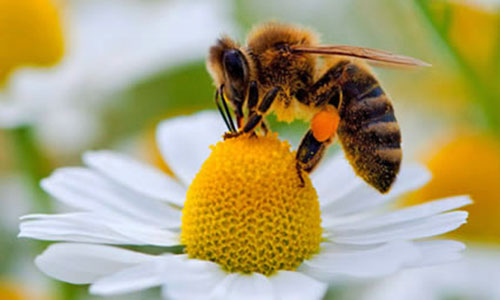|
from
PreventDisease Website
Simple, straightforward and commonsense protections have not been updated for more than 20 years to protect bees. Our imperiled pollinators are in trouble and so are we.
Despite popular reports that pollinators are crucial for food security and human health, no scientific studies have actually tested how pollinator declines may impact nutritional health - until now, say researchers.
The study (Do
Pollinators Contribute to Nutritional Health?), published in
the January issue of the scientific journal PLoS One, has, for
the first time, connected what people actually eat in four
developing countries to the pollination requirements of the
crops that provide their food and nutrients.
Since honey bees play such a critical role in pollination of various plants and crops, their decline across the globe means a growing risk to the nutrition of people living in areas most dependent upon those foods.
The study, combines dietary and nutritional data with pollination rates and finds potential for severe health effects in such regions.
Indeed, Taylor Ricketts noted that vitamin A deficiencies can lead to an increased risk of blindness and increases in death rates for some diseases, including malaria.
Plummeting pollinators
A European Food Safety Authority (EFSA) scientific risk assessment, published on May 27, 2013 (Conclusion on the Peer Review of the Pesticide Risk Assessment for Bees for the Active substance Fipronil), found that seeds treated with pesticides containing fipronil pose an acute risk to Europe's honey bee population.
According to this assessment, it was found that
fipronil
poses a high acute risk to honeybees when used as a
seed treatment for corn.
The chemical is widely used for indoor and turf
pest control in the U.S., and is a generation of insecticide
that is highly toxic. Fipronil has been shown to reduce
behavioral function and learning performances in honeybees. Indeed, recent studies have shown that these pollinators are responsible for up to 40% of the world's supply of nutrients, say the authors.
The new research takes the next step by showing that in some populations, like parts of Mozambique, the disappearance of pollinators could push as many as 56% of people over the edge into malnutrition.
Research findings
The new study examined the full pathway from pollinators through to detailed survey data about people's daily diets in parts of Zambia, Mozambique, Uganda and Bangladesh.
According to Ricketts, the team looked in to how each population's dietary patterns, questioning how much of each food group they ate.
From this, the scientists were able to examine the likely impact a future without pollinators would have on these diets.
On the bleak end of the spectrum, the team projected little difference in Bangladesh, since so many people there are already malnourished.
While at the other end of the spectrum, Zambia should be relatively insulated from this risk, said the team - noting that there is so much vitamin A in the diet in Zambia already that even reductions from pollinator declines,
|


